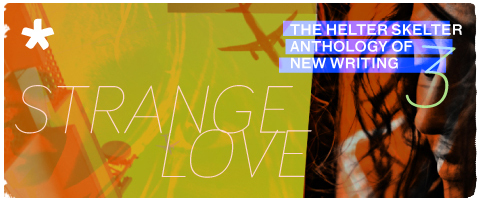It is fifteen minutes to curtain call and Shekhar is frantic because he cannot find his salangai. He has overturned his suitcase in the green room and the platform is littered with empty jewellery cases, spare silk sashes, bunches of silver- and gold-coloured safety pins, and an assortment of makeup items—tubes of eyeliner and mascara, little flat boxes of rouge and eye shadow, and rolls of lipstick in blood red. But no salangai.
This is the first time I have seen Shekhar display any emotion as himself and I admit that I am enjoying it.
“They were in here with the rest of my things,” he says to Kalapriya Amma, sorting through the mess. “They are always in this suitcase, wrapped in a yellow silk cloth!”
“Calm down, Shekhar,” says Kalapriya Amma. “Maybe you took them out while packing for today and forgot to put them back in.”
“Never!” declares Shekhar. “I never take them out!”

“Should I call someone and ask them to bring your salangai from home?” I say, but Shekhar dismisses my offer with a wave of his hand. “They are not at home!” he cries. “They were in this suitcase!”
I am surprised by this outburst; when Shekhar is his usual self, he is as interesting as a glass of water, but when agitated, it seems he turns into a hysterical teenager.
“Besides, there is no time to fetch them, Anjali,” Kalapriya Amma tells me. “The show must begin on time. We cannot keep the critics waiting.”
It is a curious sight backstage: the would-be Bharatanatyam star of the decade is going to pieces while his guru—who should be worried as well, for her reputation as a teacher is as much at stake as his—is seemingly unperturbed. Kalapriya Amma has shown not a tinge of apprehension that her foremost disciple, who will be judged by the most influential and powerful Bharatanatyam critics, is missing his salangai and therefore cannot perform.
A pair of salangai is two strips of cloth or leather with metallic bead-like bells sown onto them. They are tied around each leg at the ankle. These seemingly banal curios are perhaps the most important Bharatanatyam accessory. In a dance form where the accuracy of each foot’s position, tap, and strike are crucial, the salangai are considered an extension of the dancer’s body, a pair of appendages that keep time and remind the dancer of the precision that is expected of them. One wrong move and the bells jingle out of sync, making for a cringe-worthy moment.
We are only three backstage—Shekhar; Kalapriya Amma, our guru; and me. I have been Amma’s disciple longer than Shekhar has, but tonight I am not performing; I am here to show my “support” for Shekhar, as requested by Amma. My big debut still eludes me. Shekhar is in costume and has applied his make-up; all he needs now are his salangai and he is ready for his big debut before the cultural literati of Chennai—established dancers, critics, arts patrons, prominent journalists, and the social elite. This performance will launch his career as a professional Bharatanatyam dancer, but only if he makes it to the stage. He is still looking for his salangai.
The salangai are sacred instruments; they are not given willy-nilly to any student of the art, but to only those deemed worthy of ascending the stage and exhibiting their talent to the public. They are personal, sacred artefacts; dancers do not share their salangai with other dancers.
Even in his blue silk dhoti, Shekhar looks like a walking insect—a fancy walking insect. It is an interesting look for someone with no personality.
* * *
This was to be my night before Shekhar appeared and forced Kalapriya Amma to change her priorities. I remember the day he showed up in class. I was performing a Varnam, a difficult Bharatanatyam item that pits together pure dance sequences with storytelling (through mime, of course; dancers don’t talk). During the charanam, that point in the Varnam when the music changes as the notes realign themselves in another sequence, a tall, skinny man walked into the room.
At first, I paid no attention to him, because people—workmen, gardeners, delivery boys—were always in and out of Kalapriya Amma’s cottage. When he sat himself on the floor, next to Amma’s chair, and watched me with polite interest, I was irritated. How dare a workman treat Amma’s class as a source of common entertainment? Bharatanatyam is a divine art form, one that is believed to have been gifted to mankind by Lord Shiva himself. At its most intimate moments, it is a form of worship, a private conversation between the seeker within the dancer and the deliverer that is the Divine.
That walking insect cost me my concentration and I plodded through the rest of the Varnam, abandoning worship for a series of fumbles.
When I finished, I expected Amma to send away this strange man before enumerating the faults of my performance in her cold, acerbic tone—the one she reserves for the worst displays of Bharatanatyam. Instead, she simply said, “This is Shekhar. He will be studying Bharatanatyam under me.”
My annoyance gave way to curiosity. Was this tall, skinny man really worthy enough to be Kalapriya Amma’s disciple?
Since she retired a year ago from professional dancing, Kalapriya Amma has directed her energies to training young dancers for the stage. Her standards are exceptionally high and she doesn’t entertain anyone who hasn’t had prior training. From the hundreds of dancers who had auditioned in the past year, she accepted only one—me. And now there was another.
Shekhar and I were to be trained separately by Amma; she did not want to teach us together because that would divide her attention, she said. But this arrangement was no good because her attention was ultimately divided, with Shekhar receiving the lion’s share.
Shekhar is an exceptional Bharatanatyam dancer—I will never deny him this—but he is not the only prodigious talent in Kalapriya Amma’s class. When I first watched him dance, I shivered in ecstasy. There is no word for his talent but perfection. Every stretch of his legs and hands, every look of his eyes, every lift of his leg, every strike of his foot against the stone floor is precise and perfectly executed. His abhinaya—gestures and expressions involved in narrating stories and inhabiting characters—is perfect too. He switches roles as deftly as a cook slices up an onion. He plays a timid rabbit in one stanza and then a sinewy, charming hero in the next effortlessly. Such mastery is rare.
But Shekhar is an oxymoron. When secure within the medium of dance, he is a confident colossus, but outside of its womb, he is a timid, pathetic recluse. For weeks he did not utter a word in Kalapriya Amma’s class. Even now, he doesn’t speak unless spoken to. And when spoken to, he arranges his face in an expression of polite interest—the very same with which he saw me botch my Varnam on his first day—and then reverts to a mask of blankness.
I tried to engage him in conversation several times. I’d ask him where he was from, what he was doing in Chennai, who had taught him to dance like that, but my questions would only be met with that stupid, grating expression. For a while, I thought he couldn’t understand me, so I changed languages; I spoke to him in a more colloquial Tamil, then English, then broken Hindi, but Shekhar remained silent. Surely it is excruciating to teach someone as unresponsive as Shekhar? And yet, Kalapriya Amma not only continued to teach him, but began training him for an eventuality that was supposed to be mine.
* * *
After years of Bharatanatyam training, I had languished in second tier sabhas and theatres. I had performed in half-empty halls for uninitiated crowds in the hope that one of them was a critic with some respectability who could catapult me to the top sabhas that attracted the artistic elite of Chennai. When this did not happen, I had entered Kalapriya Amma’s fold, believing that being her student would help me to know the right people.
When she took me on as her student, Kalapriya Amma had promised to teach me a number of difficult, complex, and challenging items, ranging from a new Tillana (a pure dance item that focuses on intricate footwork) that no one had ever seen to a handful of padams (slow, expressive dances) that explored the varying moods of a heroine.
Under Amma’s tutelage, I was dancing through almost all my waking hours. And when I wasn’t dancing, I was discussing, dissecting and debating characters, mythological stories, and abhinaya techniques. It was exhilarating. I had never felt more alive. Kalapriya Amma spent all her time with me, telling me anecdotes from her dancing days when she was not teaching. She mothered me, asking me repeatedly if I had eaten my meals and offering to feed me even when I replied in the affirmative. She would ask if I had slept well the previous night. She even encouraged me to confide in her—with matters dance-related and otherwise. By the end of the year, I was sure, Amma would arrange my big debut and introduce me to the arts world of Chennai. That was, of course, before Shekhar arrived and ruined it all.

Kalapriya Amma’s time and attention got divided, and as the days progressed, the scales tipped over. At first, Shekhar’s sessions with her overshot by ten or fifteen minutes. Then thirty. Then forty-five. Then a whole hour. Amma spent more time perfecting his dancing, and discussing new items and characters with him. Then my sessions began to be cancelled arbitrarily. “Shekhar wants to work on his Varnam,” Amma would say, or “Shekhar wants to discuss Jatayu’s motivation in this piece on the Ramayana,” or “Shekhar needs to be taught the last part of a padam.” It was always what Shekhar wanted, not what I wanted. What were once our shared moments and activities were now his, so were my promised dance lessons. Everything that Amma pledged to teach me she taught him instead—that Tillana, those padams. “No more new dances for now,” she told me. “Maybe next year when you are more mature to understand them.” I was relegated to being an obligation. And in a mere three months, she arranged for Shekhar’s big debut.
And so we are here today, backstage, in a very posh theatre in Chennai, giving our support to a young dancer whose career could very well end before it begins.
Shekhar is nearly in tears now. Kalapriya Amma finally looks frazzled. “Have you seen his salangai?” she asks me. I shake my head. “Are you sure?” she asks again, raising an eyebrow. I nod. She sighs.
“It’s time, Shekhar. Get on stage,” she says.
Shekhar looks mortified. “Without the salangai?”
“Never mind that. Artistic license allows you to break rules once in a while. Now get on stage.”
With a final look of uncertainty, Shekhar sprints to the wings. It is a minute to curtain call.
Kalapriya Amma considers me for a moment before she departs the green room to take her place among the audience. I watch her disappear through the doors, but I don’t follow her; instead, I take the back exit. Outside, the sunlight pierces my eyes and I squint. I hurry towards the rear gate where stands a large garbage dumpster. I slip a hand into my bag. My fingers slide over silk cloth, and under it, the metallic beads of Shekhar’s salangai. They jingle softly as I jog. I extricate the yellow silken bundle and watch it glint in the sunlight as I hurl it into the dumpster. For the love of art—for the love of my art—there go Shekhar’s timekeepers. There go his dancing feet.










